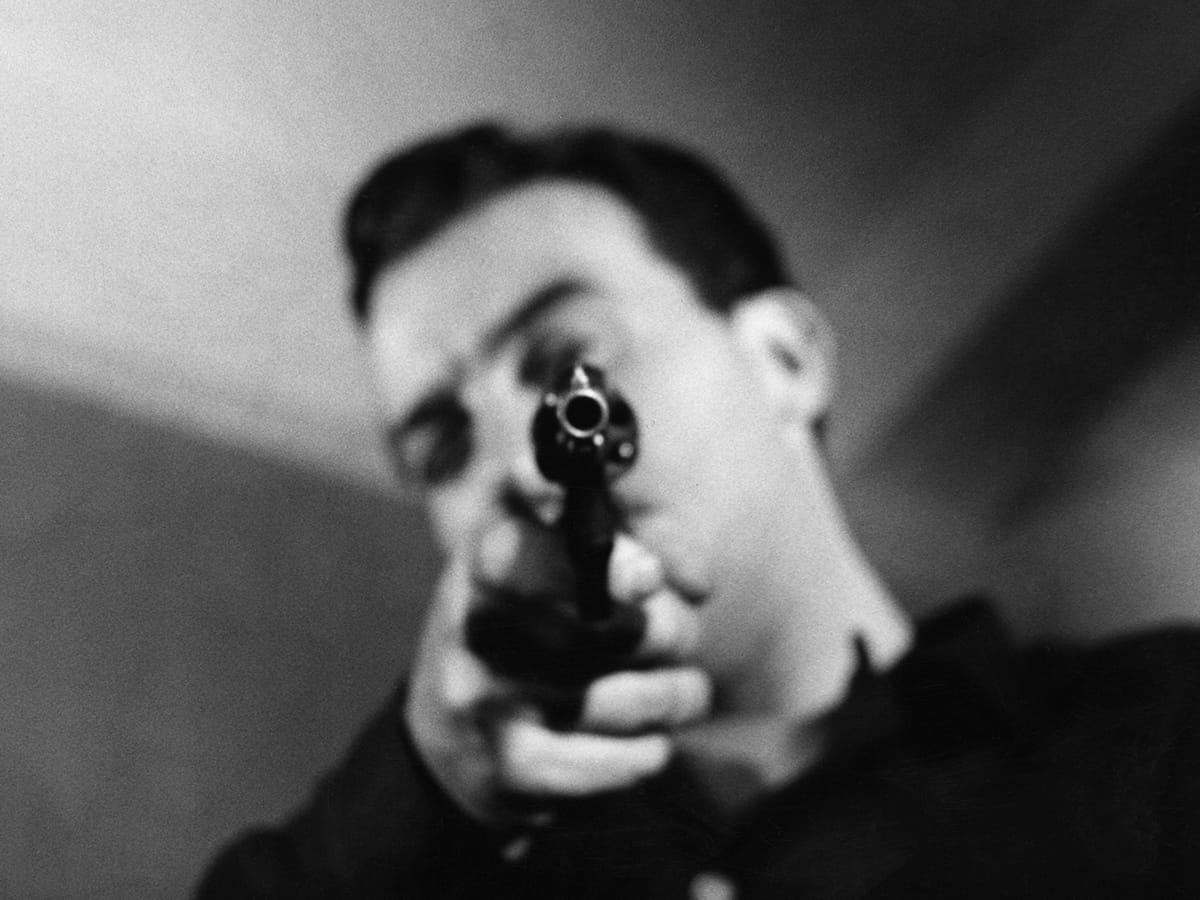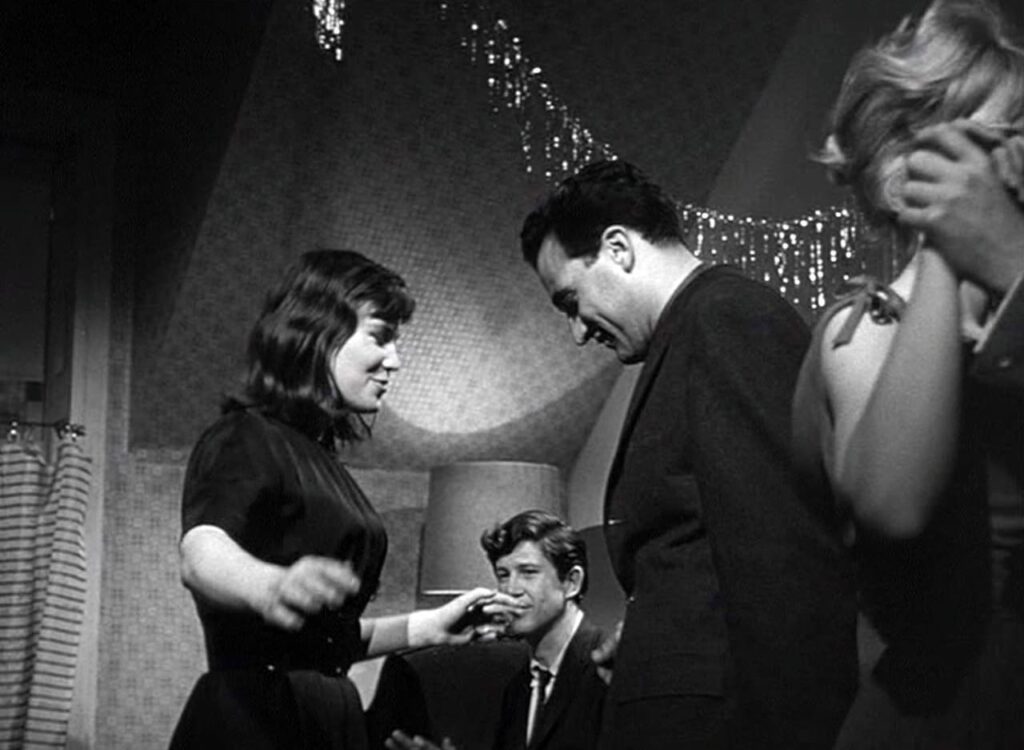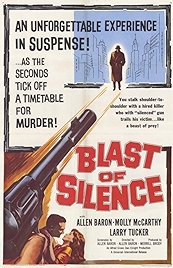Allen Baron. You’ve probably never heard of him. But he willed into being 1961’s Blast of Silence, a remarkable late noir – or early neo-noir, depending on which end of the telescope you’re looking through – which he wrote, directed and also took the leading role in when his original star, buddy Peter Falk, bailed out on him. Understandably, Falk was being offered a paying gig in the movie Murder, Inc. and Baron’s no-budget film looked like it might never get finished.
There isn’t much of a story but there’s enough. A hitman (Baron) arrrives in New York, is given the name of the target, then sources a gun to do the job. Just before showtime arrives, hitman Frank meets an old friend by chance – a “kid from the orphanage”, in half a line giving us all the backstory we need – and through him meets a woman, Lori (Molly McCarthy) who makes him feel something for the first time in his life. The inveterate loner and perpetual outsider suddenly wants to join in. It’s Christmas Eve and… well…
This, of course, spells death, an eventuality Fate has been lining up for Frank since he was born, if we’re to take any notice of the moody narration over the black screen that introduced the film – “Remembering, out of the black silence, you were born in pain,” the gravelly voice says, as if we’d come in halfway through a bleak sermon. “You were born with hate and anger built in…” Behold the existential anti-hero.
Blast of Silence is full of Baron’s friends and family members and was shot on the fly, without permits in in New York, using camera equipment Baron himself had smuggled out of Cuba (it had got stuck there when Castro’s revolution caused filming on Errol Flynn’s final film to come to a sudden halt). The patchwork MO is part of its appeal. But having shot what he needed, and using test footage to plug gaps, Baron got the film expertly edited together (Peggy Lawson, Merrill Brody) and added sound – I don’t think there’s any live sound recording on this film though I might be wrong.
Apart from the fantastic montage work – the film could almost be a series of stills – two things sew it all together. One is the voiceover by Lionel Stander, uncredited because he was blacklisted at the time (his words are written by Waldo Salt, also blacklisted). Stander later played Max on Hart to Hart (“When they met it was moidah”) and he gives it the familiar rumble from the get-go to the climax, when Frank meets his fate in circumstances that bring to mind Michael Caine’s in Get Carter – unglamorous and pitiless.
The other is Meyer Kupferman, who’d later write a book called Atonal Jazz and gives us plenty of that here, in a big-band, blaring, urgent score that’s particularly good in the action sequences but also knows how to pare it back for the many shots of Frank pounding the streets as he researches his hit.
Because it’s all done on the fly, the film acts as a kind of documentary archive of New York as the 1960s arrive. Those shots in Harlem, where Frank is following the pimp/extortionist/rackets guy he’s later meant to kill are particularly flavourful. Because of the issues around permits, Baron shoots in places other films rarely visited, the burbs, bridges and tunnels into and out of Manhattan. It’s the grimy Big Apple and Baron’s impassive features and minimalist acting style slot right in.
It’s a simple and straightforward film in many ways but with a dark heart that some critics at the time found a bit hard to handle. It’s understandable. As the film comes to a close, Stander’s voiceover intones: “The scream is dead. There’s no pain. You’re back home again, back in the cold, black silence.” A bit much, perhaps, but also – woof!
Blast of Silence – Watch it/buy it at Amazon
I am an Amazon affiliate
© Steve Morrissey 2023


